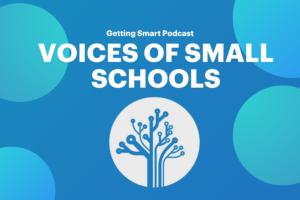Viva! Blended Learning
This story originally ran in the Journal, and it was written by Bridget McCrea.
Story
The people at Odyssey Charter Schools would prefer that their institution be known as a “classroom without walls,” rather than just another alternative for parents who are disenchanted with the traditional school system. And while the Las Vegas K-12 school initially grew out of a need for a hybrid between those traditional schools and home schooling, Michele Robinson, superintendent, said it has since blossomed into a viable option for a large swath of students.
“We shy away from calling this ‘home schooling’ because Odyssey is a public school,” said Robinson, who acknowledged the fact that the school fills a void that often opens up when students are pulled from traditional classrooms in favor of home schooling. “We knew there was a large population of parents who were looking for alternatives, but who didn’t have the experience, knowledge or resources to [home school]. We wanted to reach that population.”
Odyssey was founded by a school administrator who had worked for the Clark County School District for more than 30 years. Bent on getting parents more involved with their children’s educations, Vee Wilson developed a school that blended traditional classroom learning with technology, and that allowed parents to “become more intimately involved with their students’ educations,” said Robinson.
When Nevada passed its charter schools law in 1997, the action paved the way for Wilson to develop “a unique school concept that combined technology with distance education and face-to-face instruction,” said Robinson. The school opened in 1999 and found K-8 students doing all of their schoolwork in their own homes, assisted by in-person visits by the institution’s instructors. High school classes were added a few years later and necessitated a different instructional arrangement.
“We couldn’t send five different teachers to every student’s home,” said Robinson. To solve the problem, Odyssey set up a schedule whereby students would visit campus once a week for a four-hour stint for face-to-face instruction. A similar setup is also used for the school’s eighth-grade transition program, according to Robinson, who said students expand their on-campus time past the four hours per week as needed.
The school’s 32,000-square-foot physical location comprises two buildings that house high school and K-8 classrooms, along with science labs, intervention labs and “spaces where teachers and students can work on remedial studies,” said Robinson. Another section of the building houses all of the school’s special education facilities, with additional space for ancillary services.
Since Odyssey’s inception, technology has played a major role in all aspects of the school’s administration and instruction. With about 1,400 students, the institution’s 62 teachers live by the philosophy that, “technology changes so fast, and if we’re doing the same thing two years in the future that we are doing right now, then we have fallen behind,” said Robinson. “We really try to stay ahead of the technology curve, and we put a lot of effort into figuring out how we can utilize it to better serve our students.”






0 Comments
Leave a Comment
Your email address will not be published. All fields are required.